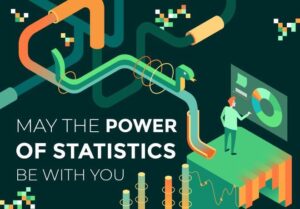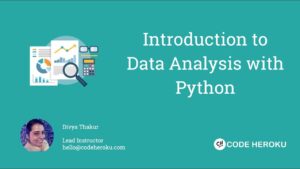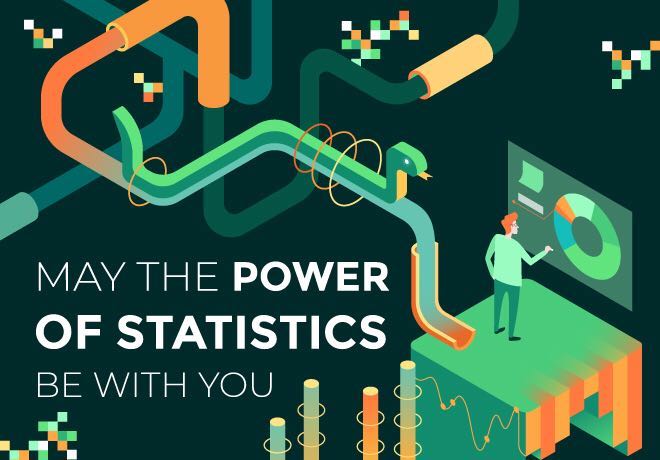
In the rapidly evolving landscape of data science and statistical analysis, Python has emerged as a transformative force. Known for its versatility and extensive libraries, Python is reshaping how analysts and data scientists approach statistical analysis. In 2024, Python continues to set new standards in this field, offering innovative tools and techniques that enhance accuracy, efficiency, and insight generation. This article explores the key trends and techniques in Python that are revolutionizing statistical analysis this year.
1. Enhanced Libraries and Frameworks
Python’s ecosystem is renowned for its rich set of libraries that facilitate advanced statistical analysis. In 2024, several libraries have seen significant updates and improvements:
- Pandas: As the cornerstone of data manipulation in Python, Pandas has introduced new functionalities for handling large datasets more efficiently. The latest version offers enhanced performance for time-series data, advanced indexing, and improved integration with other data analysis tools.
- SciPy: This library continues to be indispensable for scientific and technical computing. Recent updates include more robust statistical functions and tools for multivariate analysis, making it easier to perform complex statistical modeling.
- Statsmodels: Known for its statistical modeling capabilities, Statsmodels has incorporated new features for causal inference and Bayesian analysis, providing more robust tools for hypothesis testing and model fitting.
2. Integration with Machine Learning
The integration of statistical analysis with machine learning has become a prominent trend in 2024. Python’s libraries, such as Scikit-learn and TensorFlow, offer seamless integration with statistical techniques, enabling analysts to combine traditional statistical methods with modern machine learning algorithms. This fusion allows for more sophisticated predictive modeling and data insights.
- Scikit-learn: This library continues to be a favorite for machine learning, with recent updates focusing on enhanced support for statistical learning methods. It provides tools for feature selection, dimensionality reduction, and model evaluation, which are crucial for accurate statistical analysis.
- TensorFlow: With its advanced capabilities in deep learning, TensorFlow now includes modules that support statistical analysis, including probabilistic models and Bayesian neural networks. This integration facilitates more comprehensive analysis and model interpretation.
3. Data Visualization and Communication
Effective communication of statistical results is critical, and Python’s data visualization libraries play a crucial role in this aspect. In 2024, libraries like Matplotlib, Seaborn, and Plotly have introduced new features to enhance data visualization:
- Matplotlib: This library remains a staple for creating static plots. Recent updates have introduced new styles and customization options, allowing analysts to create more visually appealing and informative charts.
- Seaborn: Known for its high-level interface for drawing attractive and informative statistical graphics, Seaborn now includes improved tools for plotting complex statistical relationships and distributions.
- Plotly: As an interactive visualization library, Plotly has expanded its capabilities to include more interactive and dynamic charts, which are valuable for exploring and presenting statistical data in a more engaging manner.
4. Advanced Statistical Techniques
In 2024, Python has introduced new techniques and tools for advanced statistical analysis:
- Bayesian Statistics: Bayesian methods have gained prominence due to their ability to incorporate prior information into statistical models. Python libraries like PyMC3 and TensorFlow Probability offer enhanced support for Bayesian analysis, allowing for more nuanced and flexible statistical modeling.
- Time Series Analysis: With the increasing importance of temporal data, Python has enhanced its capabilities for time series analysis. Libraries like Statsmodels and Pandas now offer more sophisticated tools for forecasting, trend analysis, and seasonality detection.
- Causal Inference: Understanding causal relationships is crucial for making data-driven decisions. Python has introduced new libraries and methods for causal inference, such as DoWhy and CausalImpact, which help analysts identify and quantify causal effects in complex datasets.
5. Improved Performance and Scalability
Handling large datasets and performing computationally intensive analyses have always been challenges in statistical analysis. In 2024, Python has made strides in improving performance and scalability:
- Dask: This library allows for parallel computing and distributed processing, making it easier to handle large datasets and perform complex computations efficiently.
- Numba: By providing Just-In-Time (JIT) compilation, Numba enhances the performance of numerical operations, allowing for faster execution of statistical algorithms and models.
6. Increased Focus on Reproducibility and Collaboration
Reproducibility and collaboration are essential aspects of modern data analysis. Python has made significant advancements in these areas:
- Jupyter Notebooks: These interactive notebooks continue to be a popular tool for documenting and sharing statistical analyses. Recent updates have improved support for collaboration, version control, and integration with other data analysis tools.
- Binder and GitHub: Tools like Binder and GitHub facilitate sharing and reproducing analyses by providing environments for running and verifying code. These tools enhance transparency and collaboration in statistical analysis projects.
Conclusion
In 2024, Python is at the forefront of revolutionizing statistical analysis with its enhanced libraries, integration with machine learning, advanced statistical techniques, and improved performance. As Python continues to evolve, its role in shaping the future of statistical analysis becomes increasingly significant. By leveraging these key trends and techniques, analysts and data scientists can unlock deeper insights and make more informed decisions based on their data.



